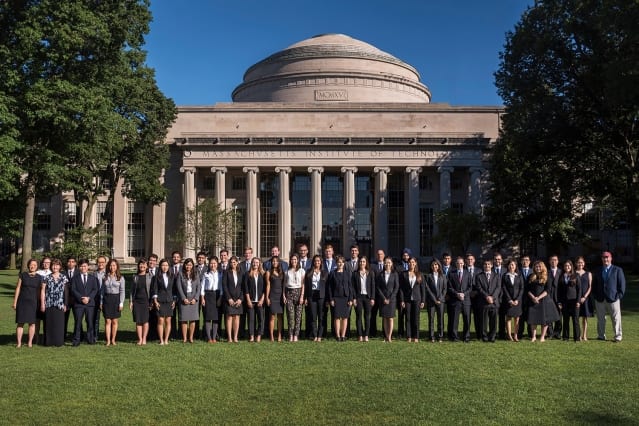London, 15 September 2018: QS Quacquarelli Symonds, higher education analysts and compilers of the QS World University Rankings (WUR), have recently released the 2019 edition of the QS Graduate Employability Rankings (GER). This year’s edition indicates that IIT Bombay is India’s best university for fostering graduate employability and engaging with employers. It ranks in the 141-150 category. This constitutes a substantial year-on-year rise, with it previously ranked in the 191-200 band. However, the results also indicate that India’s most successful graduates – rather than those most likely to be employed – do not come from India’s IITs.
In total, 9 Indian institutions are ranked among the top 500, with seven of these 9 performing better in the QS Graduate Employability Rankings than in the QS World University Rankings (consult Table 2). Also among the global top 200 are IIT Delhi (151-160 band) and IIT Madras (181-190 band). However, the University of Delhi is responsible for more highly successful graduates than any other university in India. It ranks 21st for QS’s Alumni Outcomes indicator, scoring 96.7/100.
The rankings offer students, parents, and policymakers with comparative data on 500 universities, according to their ability to provide their students with a successful career. They are compiled according to a methodology that acknowledges that the relationship between university choice and career outcomes cannot be adequately captured by earnings data or graduate employment rate figures.
What are the key takeaways?
Massachusetts Institute of Technology (MIT) IS the world-leader for the first time, deposing Stanford University (2nd) at the top;
Universities in California, Asia, and Australia enjoy especial success, with Californian and Australian institutions accounting for five of the top ten;
In total, 9 Indian institutions are ranked among the top 500, with seven of these 9 performing better in the QS Graduate Employability Rankings than in the QS World University Rankings (consult Table 2);
Also among the global top 200 are IIT Delhi (151-160 band) and IIT Madras (181-190 band);
However, the University of Delhi is responsible for more highly successful graduates than any other university in India. It ranks 21st for QS’s Alumni Outcomes indicator, scoring 96.7/100;
No IIT achieves a top-100 score for Alumni Outcomes; however, the University of Delhi is followed by the University of Mumbai, which ranks 38th in the world for Alumni Outcomes with a score of 87.7/100;
Though the overall results indicate that India’s IITs are successfully engaging with employers and fostering hireable graduates, the Alumni Outcomes results demonstrate that graduates becoming CEOs, politicians, entrepreneurs, and occupying other executive roles tend not to come from this group of elite, highly selective institutions;
Of India’s 9 ranked universities, 4 have improved their rank. 1 has dropped, 1 is a new entrant, and three have remained stable within their band.
How were the rankings compiled?
QS use five indicators to compile the GER:
- Employer Reputation (30% of final score): Where are employers hiring the best graduates from? QS surveyed 42,000 employers to find out;
- Alumni Outcomes (25%): Which universities produce world-leaders in their field? QS used alma mater data for over 28,000 highly successful individuals to work out where you should go if you want to rule the world;
- Partnerships with Employers per Faculty (25%): This measures institutional employer engagement: how many research partnerships and internship/placement opportunities does a university have? It is adjusted by the number of faculty so as to not bias the ranking in favour of large universities;
- Employer-Student Connections (10%): How many individual employers have been physically present on a university’s campus over the last 12 months?
- Graduate Employment Rate: What proportion of this university’s graduates are employed 12 months after graduating? QS adjust to account for national economic conditions, so that universities aren’t penalised for operating in struggling economies, or unduly beneficiaries of thriving ones.
Ben Sowter, Research Director, QS, said: “Rises in tuition fees and an ever-more-competitive job market are making students ever-more-concerned about the likelihood that their prospective university will help them thrive afterwards. This ranking is designed to empower them to make more informed choices, and indicates that those universities that have excellent research profiles and global reputations aren’t always those that do most to nurture student employability.”
“Interestingly for our Indian audience, our results also indicate that, when employability is emphasised and relative research performance is removed from the equation, the performance of the country’s leading higher education institutions appears rather better. However, for further improvements in this table – and in the employment outcomes of Indian students – the results also indicate that Indian institutions should be doing more to forge research partnerships with top companies, and to invite employers onto campus in order to allow students to expand their networks.”
QS Graduate Employability Rankings 2019: Indian Overview
2019 Rank 2018 Rank 2019 QSWUR Institution
141-150 191-200 162 Indian Institute of Technology Bombay (IITB)
151-160 191-200 172= Indian Institute of Technology Delhi (IITD)
181-190 201-250 264= Indian Institute of Technology Madras (IITM)
201-250 251-300 295= Indian Institute of Technology Kharagpur (IITKGP)
201-250 201-250 487 University of Delhi
251-300 201-250 801-1000 University of Mumbai
301-500 301-500 170 Indian Institute of Science (IISc) Bangalore
301-500 301-500 283= Indian Institute of Technology Kanpur (IITK)
301-500 – 801-1000 University of Calcutta
Source: QS Quacquarelli Symonds 2004-2018 https://www.topuniversities.com/









